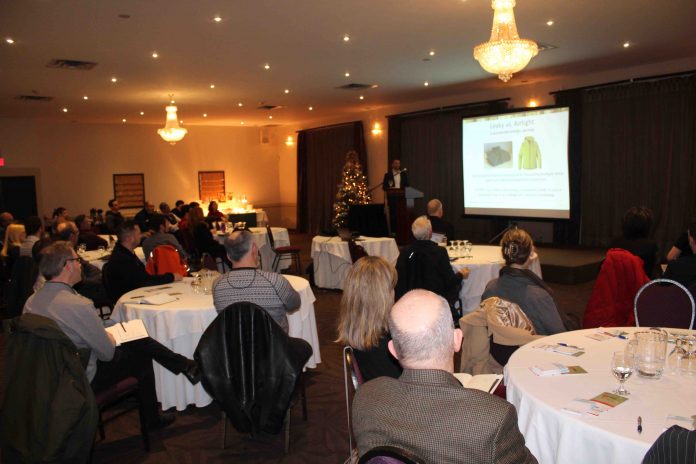How do you achieve the best results in designing and building extremely comfortable, healthy, and energy efficient buildings?
“Make it tight,” says Craig Toohey, who represents a specialized supplier for Passive House and energy efficient projects.
Toohey, with 475 High Performance Building Supply headquartered in New York, explained to about 50 architects, specification writers and contractors at a Construction Specifications Canada Ottawa chapter gathering on Nov. 28, that a high-performance building is comfortable, healthy, energy efficient, resilient, affordable and “beautiful”.
And one of the most important elements in achieving these challenging objectives is “air control”.
“Air control is actually more important than insulation, and is second only to water control,” he said.
While you undoubtedly don’t want water leaks in any structure, air leaks are almost as costly and consequential to the building’s efficiency (followed by vapour control and thermal control.)
“We want airtightness,” he said. “It disproportionately affects the fundamental aspects of the building’s performance.”
Of course, indoor air quality is important – and there needs to be good ventilation. However, ventilation should be controlled. One slogan he says applies is: “Make it tight, ventilate it right.”
The Passive House concept, which combines extreme energy efficiency with ventilation systems and air tightness, is based on measurable standards, with the use of blower-door testing to ensure that the building performs at its intended specifications.
Air tightness is achieved through a variety of building methods and products, ranging from specialized tapes and gaskets (to ensure there are no gaps where there are conduits and joints) to ) to liquid, self-adhered, and mechanically fastened membranes for weather and moisture protection. EIFS and other cladding systems.
Toohey says he generally discourages spray-foam-based insulation systems, because there are real challenges in controlling quality and the foam contains toxic substances which may be especially harmful if there is a fire.
There are some common sense methods to ensure that work is done properly. Projects should be carefully planned with team meetings, guidance, specialized training.
As well, Toohey advises contractors to:
- Pay attention to material storage, application, and UV exposure limitations
- Clean surfaces before you connect them;
- Verify your materials for continuity – you want to avoid unplanned gaps;
- Inspect and verify your work as it progresses, and test the air barrier with a blower door test – early and often – you don’t want to get caught with a surprise at the end.
For additional information on high performance enclosures and 475 High Performance Building Supply visit: www.foursevenfive.ca.








